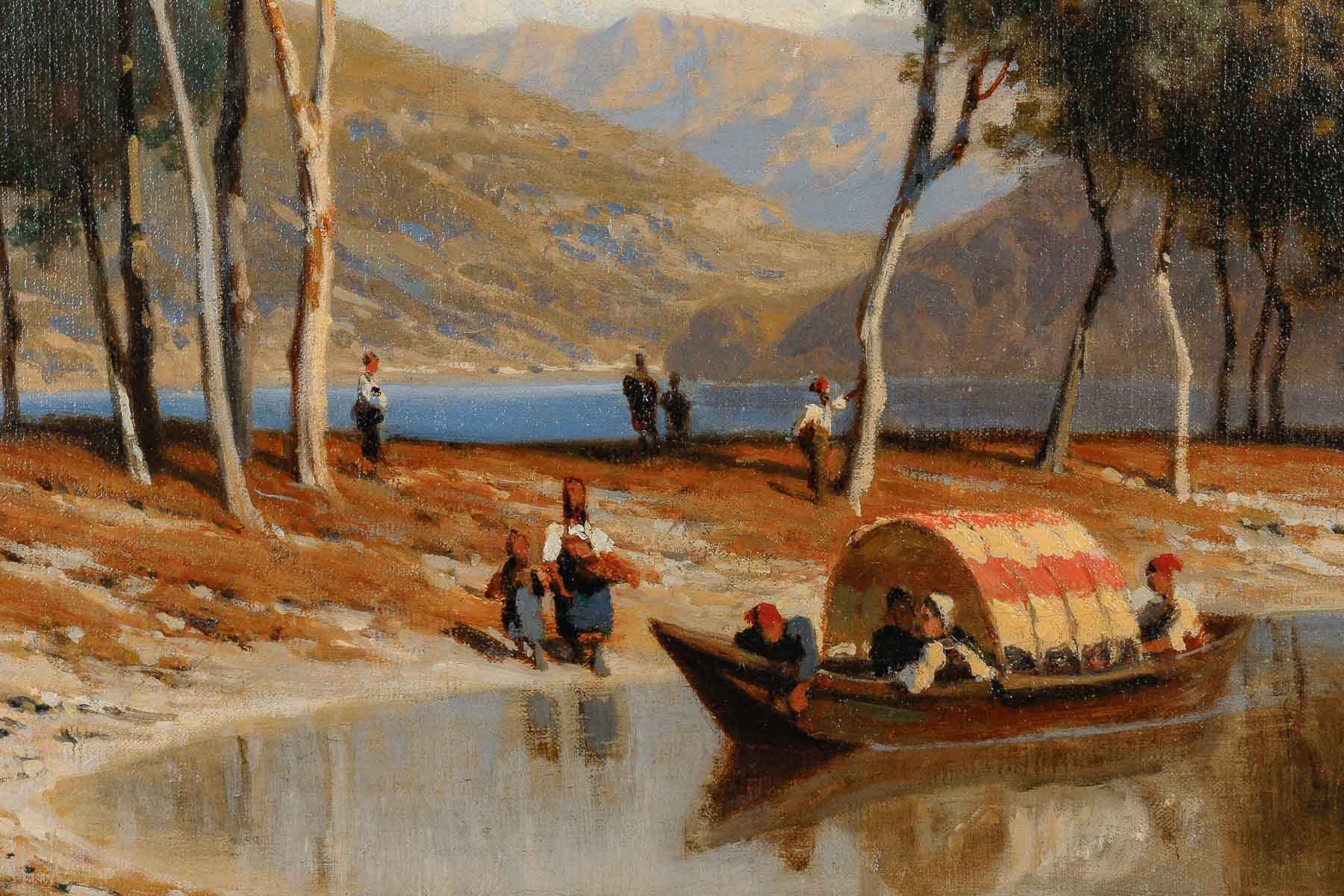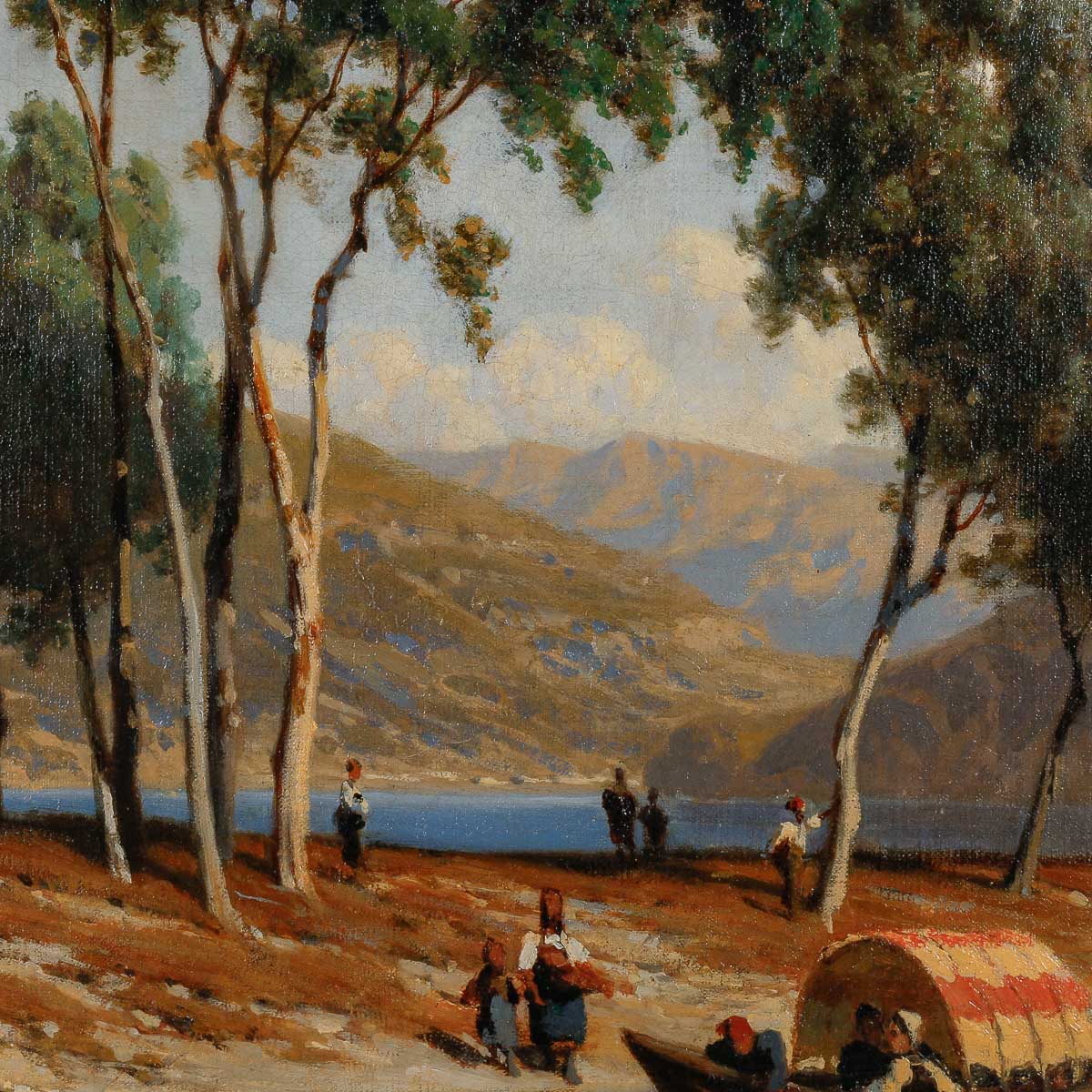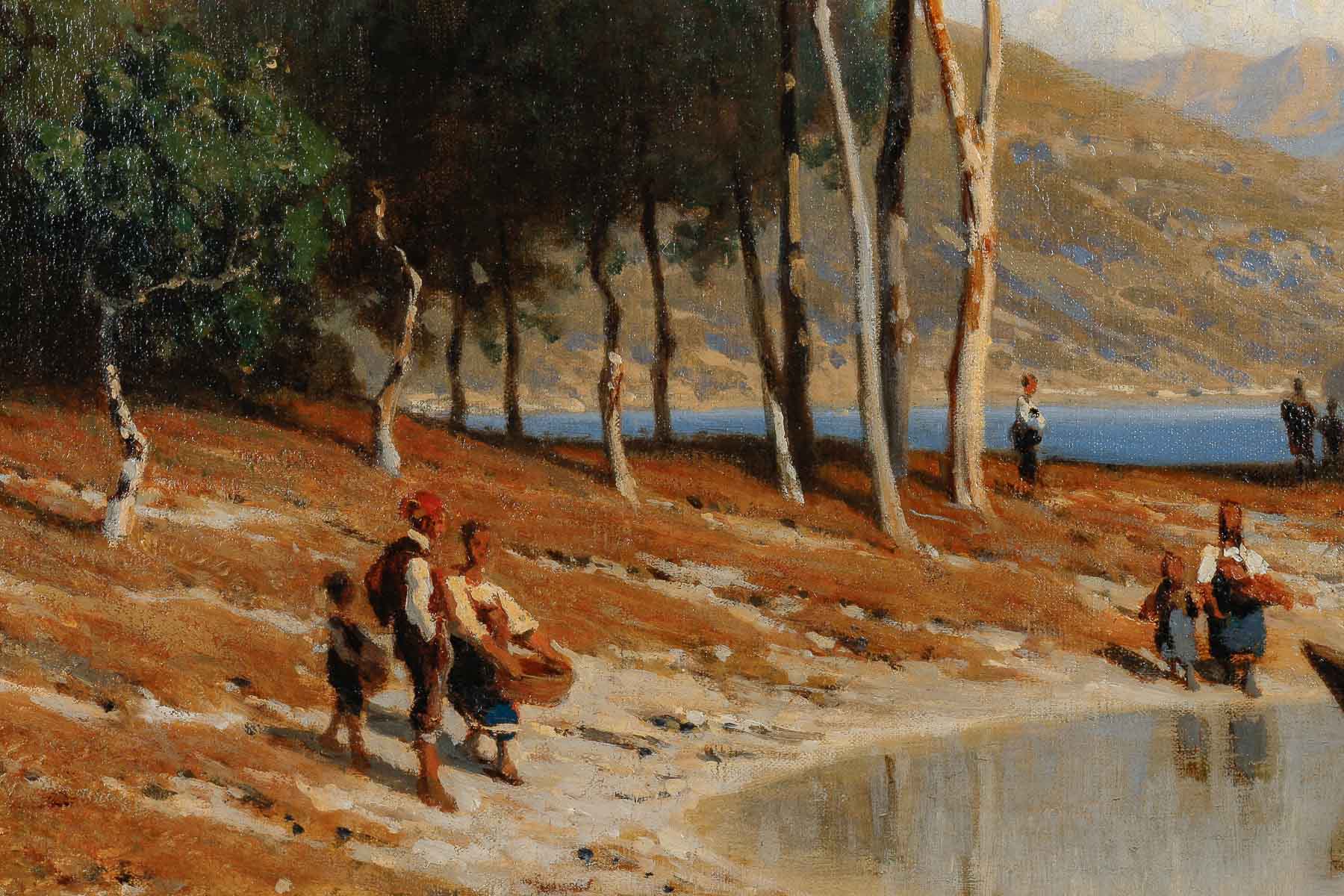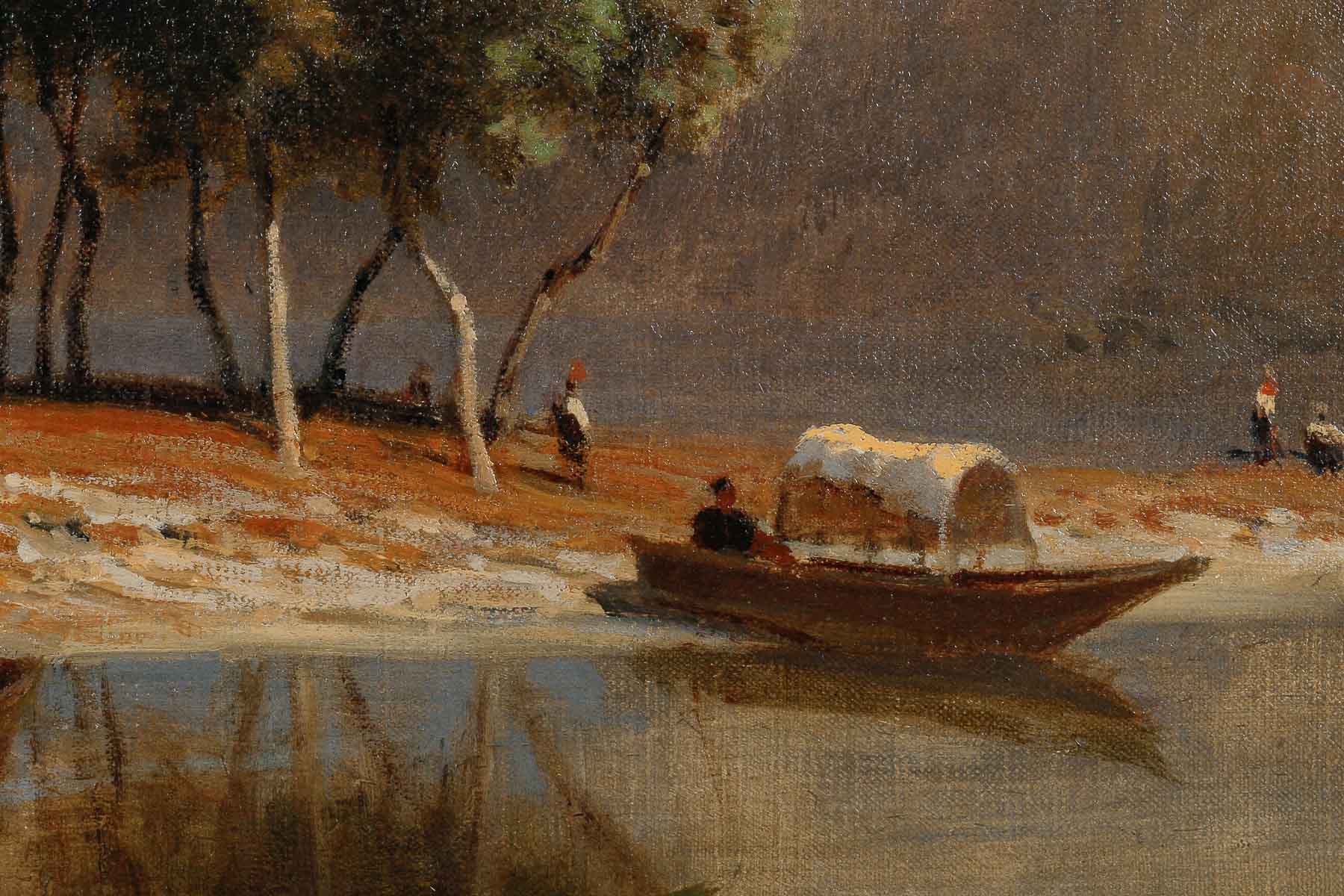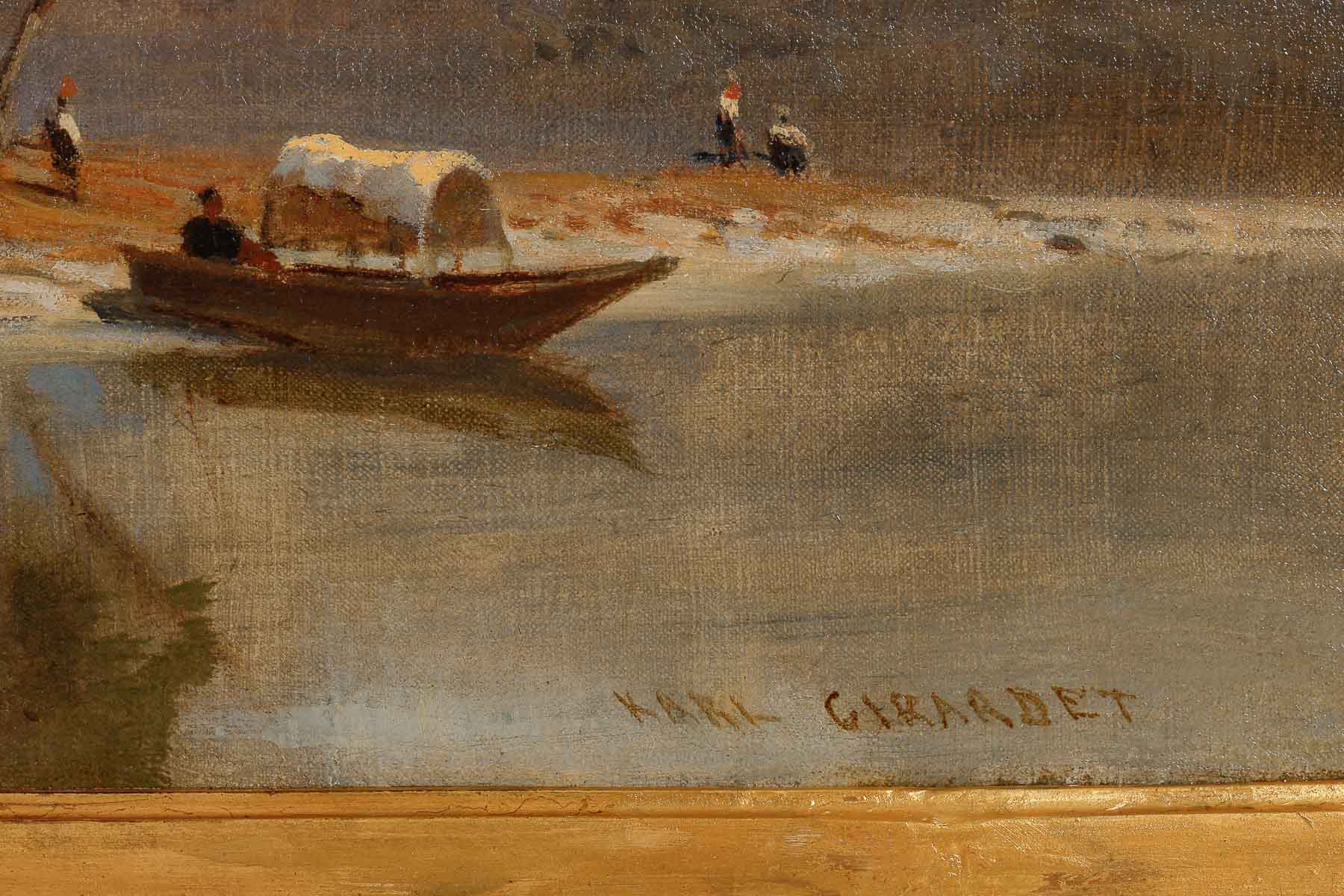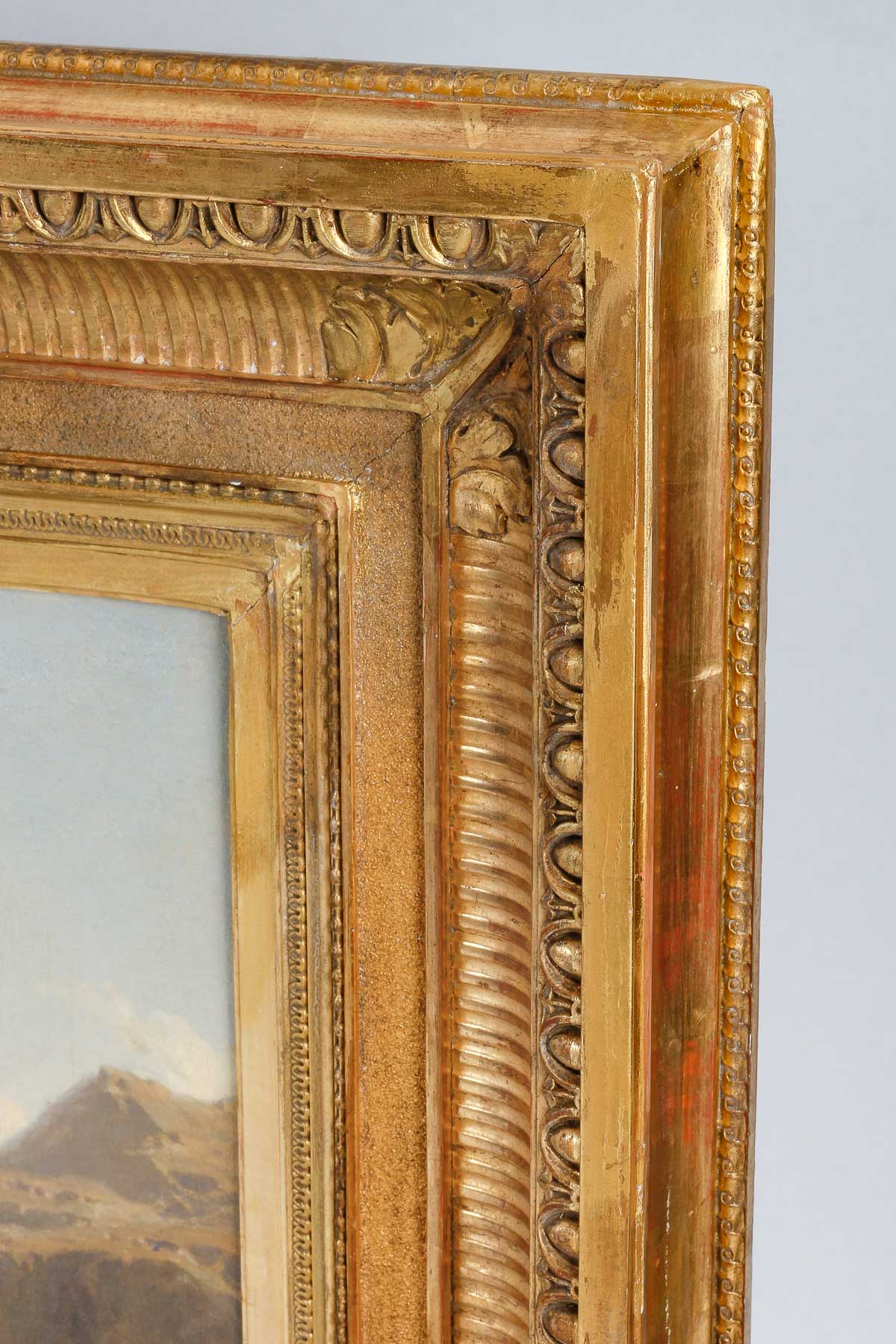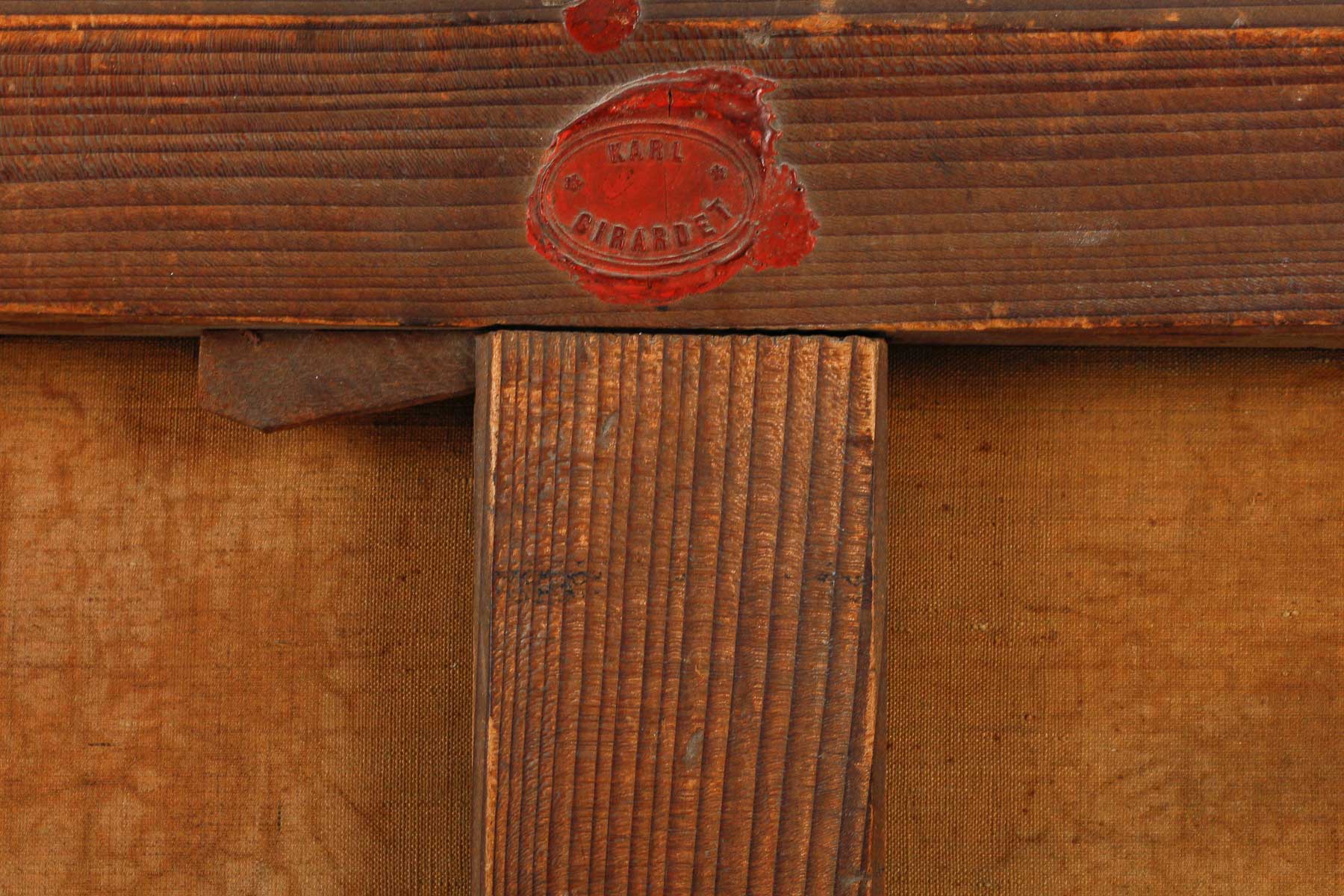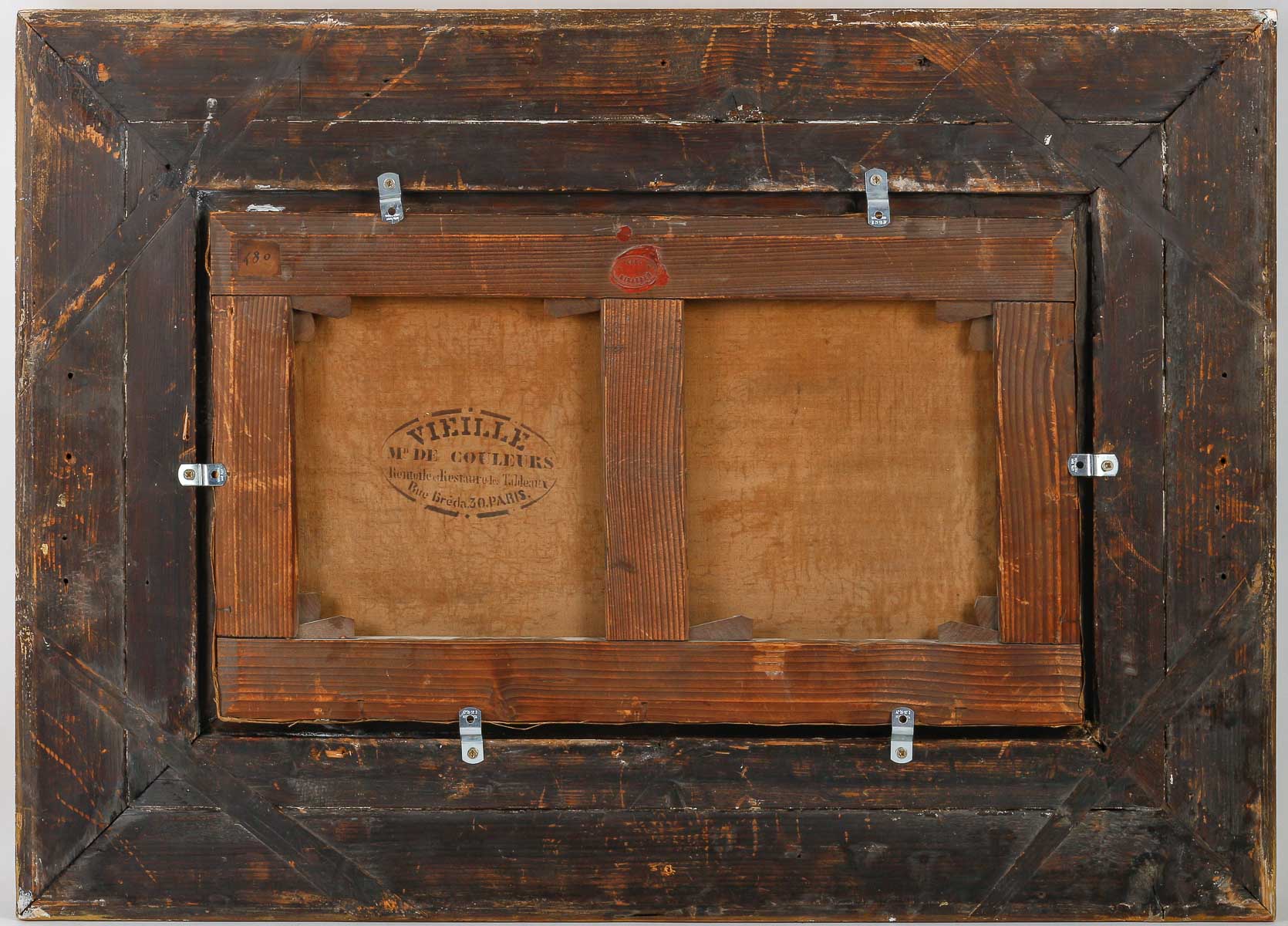Karl Girardet
Swiss Lake Brienz by Karl Girardet, circa 1950. A tranquil landscape painted with high precision and delicate variations in light.
Oil on canvas
Signed lower right
Dimensions: 30 x 51 cm
With frame: 54 x 76 cm
Price : 7500 euros
Switzerland’s Lake Brienz, “a little paradise”.
located in the majestic mountains of the Bernese Oberland, north of the Swiss Alps, lies the turquoise Lake Brienz. A magical, heavenly place. It takes its name from the village of Brienz, located on the northern shore.
In 1948, Karl Girardet and his brother Edouard moved here and painted many landscapes.
The clear, warm and calm atmosphere of Lake Brienz exudes a certain emotion.
Fine execution and subtle color mastery,
The work demonstrates technical mastery, particularly in rendering the transparency of water and foliage. Light variations are extremely delicate. The piece of land animated by several figures and its foliage of trees advancing on the lake divides the canvas in two parts and opens onto the peaks in the background.
The composition is panoramic, calm, luminous and almost timeless.
Biography
Karl Girardet, born in May 1813 at Le Locle in the Principality of Neuchâtel (French under the First Empire) and died in April 1871 in Paris, was a painter, engraver and illustrator. He lived and worked most of his life in Paris.
The eldest son of engraver Charles Girardet and his wife Fanny Charlotte Favre, he belonged to a dynasty of Swiss artists with close ties to France, of which he was the most prominent figure. He was introduced to drawing and engraving by his father, and initially took the first name “Karl” to distinguish himself from his father. His father moved to Paris in 1822 when Karl was just nine years old.
He trained with the painter Louis Hersent, then was admitted to the École des Beaux-Arts in the studio of Léon Cogniet, who became a loyal friend. He meets Swiss painter and patron Maximilien de Meuron.
His first exhibition at the Paris Salon took place in 1836, where he showed genre and history paintings that appealed to the royal family; he became a protégé of King Louis-Philippe, who commissioned many works from him and involved him in the decorative program of the new Musée de l’Histoire de France, which he had initiated in Versailles in 1837. Karl made his debut there, assisting his master Léon Cogniet on two battle scenes.
As confidant of the French king Louis Philippe I, he became official court painter.
In 1838, he left for Düsseldorf and crossed the Tyrol and Croatia in 1839, finally reaching Italy in 1840. In 1842, he made a trip to Egypt with Albert de Meuron, then accompanied the Duc de Montpensier to Spain.
After the February 1848 revolution, and enlistment in the National Guard, he left France with his brother Édouard and settled in Brienz, Canton Bern. he turned to landscape painting, which he continued to exhibit at the Salon until the end of his life.
Here he painted landscapes and composed canvases based on sketches from his travels in the Orient. His engravings appeared in the “Magasin pittoresque” and “Le Tour du Monde” magazines.
He exhibited regularly at the Salon until 1870. He exhibited at the 1855 Universal Exhibition, where he won a 1st class medal.
He moved to a studio in Montmartre in 1857, where he lived until his death.
Museums
In France
– Paris, Musée du Louvre- Albums; numerous illustrations, engravings.
– Lille, Palais des Beaux-Arts.
– Tours, Museum of Fine Arts
– Versailles, Musée national des châteaux de Versailles et de Trianon.
– Nantes, Fine Arts Museum
– Chantilly, Condé Museum
– Rouen, Musée des Beaux-Arts
– Reims, Musée des Beaux Arts de Saint denis
– Senlis, museum of art and archaeology
– Montauban, Ingres Bourdelle Museum
In Switzerland
– Neuchâtel, Musée d’art et d’histoire.
– La Chaux-de-Fond, Musée des Beaux-Arts.
Source
https://fr.wikipedia.org/wiki/Girardet



